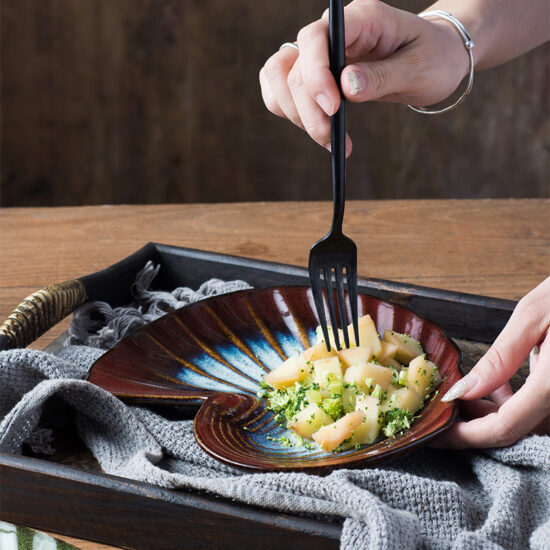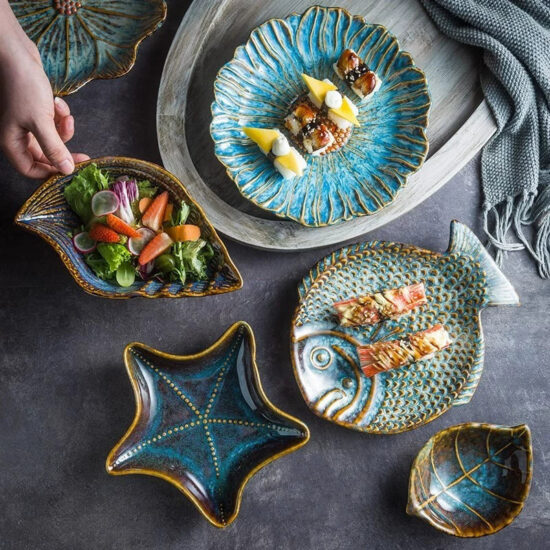bob@nbdho.com
Types of Glazes and Techniques for Ceramic Plates: A Guide for Wholesale Buyers
🟠 Types of Glazes and Techniques for Ceramic Plates
The glaze and surface technique of a ceramic plate not only influence its aesthetic but also its durability, safety, and market value. Whether you are a tableware importer, restaurant brand buyer, or design firm sourcing custom pieces, understanding glaze options is crucial for selecting the right ceramic products.
This guide introduces the most common types of glazes and decorative techniques used in ceramic plate manufacturing — and their ideal applications in B2B and OEM/ODM orders.
🔹 1. Glossy Glaze
Description:
A shiny, smooth, reflective surface often found in porcelain and bone china.
Advantages:
-
Enhances color vibrancy and clarity
-
Easy to clean and food-safe
-
Adds a luxurious, high-end finish
Best For:
-
Hotel dining sets
-
Fine dining restaurants
-
Logo-printed promotional tableware
🔹 2. Matte Glaze
Description:
A non-reflective, soft-touch finish that provides a modern and minimalistic aesthetic.
Advantages:
-
Reduces glare under lighting
-
Ideal for contemporary or Nordic-style designs
-
Scratch-resistant and durable for daily use
Best For:
-
Café and casual restaurant sets
-
Minimalist home décor plates
-
OEM Scandinavian-style designs
🔹 3. Crackle Glaze (Craquelure)
Description:
A glaze intentionally formulated to develop fine cracks on the surface for visual texture. A second transparent glaze is often applied for food safety.
Advantages:
-
Vintage, artisanal appeal
-
Unique texture that varies per piece
-
Pairs well with rustic or handmade designs
Best For:
-
Artisanal tableware lines
-
Boutique giftware
-
Decorative plate collections
🔹 4. Reactive Glaze
Description:
A complex glaze made by combining multiple minerals, which reacts during firing to create unpredictable, multitone finishes.
Advantages:
-
No two pieces look the same
-
Rich in visual depth and variation
-
Popular in Western and Japanese fusion styles
Best For:
-
High-end restaurant table settings
-
Premium OEM product series
-
Designer collaborations
🔹 5. Celadon Glaze
Description:
A traditional glaze originating from ancient China, known for its jade-like translucent pale green finish.
Advantages:
-
Historical, cultural charm
-
Subtle, elegant coloration
-
Timeless appeal in Asian cuisine settings
Best For:
-
Cultural dining experiences
-
Museum replicas or themed restaurants
-
Custom Asian-style product lines
🔹 6. Speckled or Salt Glaze
Description:
A glaze that appears lightly dotted or crystallized for a natural and organic feel.
Advantages:
-
Earthy and textured look
-
Enhances the artisan-crafted aesthetic
-
Pairs well with natural-toned tableware
Best For:
-
Eco-themed cafés and restaurants
-
Natural lifestyle product lines
-
Sustainable branding concepts
🧪 Common Glazing Techniques
In addition to glaze types, manufacturers apply different techniques for creative finishes:
| Technique | Description | Best Use |
|---|---|---|
| Dip Glazing | Uniform glaze by dipping plates into glaze tank | Mass production |
| Spray Glazing | Allows gradient or ombré effects | Design-oriented collections |
| Hand Brushing | Applied by hand for texture or signature look | Small batch or luxury orders |
| Stamping or Wax Resist | Patterns created by masking areas during glazing | Logo/branding decoration |
| Double Firing | Glazed and fired twice for strength and vibrancy | High-end custom orders |
🔍 Choosing the Right Glaze for Your Market
Each glaze type and technique can affect your product’s:
-
Price point
-
Consumer target (casual vs. premium)
-
Brand style compatibility
-
Safety and durability requirements
As a ceramic plate factory and wholesale supplier, we provide flexible glaze solutions and support full customization, from raw clay to final surface. Whether you’re developing a minimalistic Scandinavian set or a luxury reactive-glaze dinnerware collection, our team can advise on optimal finishes for your market.
🏁 Conclusion
Selecting the right glaze type and technique is a key part of product development for wholesale buyers, importers, and tableware brands. A well-chosen glaze not only enhances appearance but also reinforces brand image and customer experience. Work with a professional supplier to explore glaze samples, lab-tested safety, and long-term finish stability.
📩 Contact us today to explore glaze charts, B2B catalogs, or start a custom ceramic plate project.

